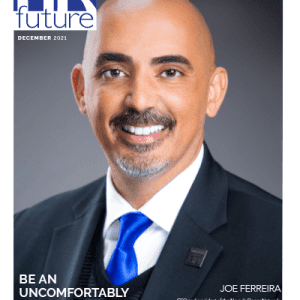A new skills marketplace is taking shape. What are the trends and their underlying causes, and how are the shifts impacting the HR discipline in Africa?
In recent years, two significant tremors have triggered the rise of talent megatrends.
One is the change in attitudes to work. These evolved quickly during the Covid pandemic and continue to do so in its wake. The Great Resignation may or may not be over, but, worldwide, people see work-life balance as important and attainable and are demanding meaningful work in more humancentric workplace environments.
The other trend stimulus comes from corporate leaders. Their quest is for faster innovation, heightened competitiveness and, in particular, greater productivity. The CEO clarion call is for smart, efficient technologies – and for talented people with more relevant skillsets.
But the goalposts keep shifting. Companies’ skills needs are changing at the pace of business – which is rapid. HR leaders have problems pinpointing current requirements, let alone predicting those of the future. Workforce Skills Plans are often outdated as they come off the printer, assuming the company still uses one.
Forging a relatable and productive workplace
May you live in interesting times, goes the saying; it certainly applies to talent professionals today, as they must assess the implications of these two opposing forces and deal with the fallout as they collide. However, what is starting to ease if not entirely resolve employers’ and employees’ apparently irreconcilable positions is the emergence of a new skills paradigm: a more flexible talent marketplace, shaped to spur greater productivity precisely by being more humancentric.
So, we are seeing an emphasis on improving the employee experience. HR leaders are now cohering wide-ranging initiatives to ensure employees are enabled and included, coached, mentored and developed, and allowed a level of autonomy and flexibility. Getting this right is a catalyst for improved motivation, engagement and inspiration. Which loops back to productivity, because engaged and inspired people are up to two-and-a-half times as productive as disengaged, or simply satisfied, employees[1].
Technologies can enable this, but a company’s culture gears it, and today there is significantly more transparent debate about corporate culture. Diversity, equity and inclusion is on the lips of employees and the minds of other stakeholders, as are the company’s purpose and values. Worldwide, environmental, social and corporate governance (ESG) reporting has gathered momentum, with a particular resonance in Africa given the continent’s history. CHROs are juggling multiple balls, but nurturing a strong connection between employees and the organisation is one that cannot be dropped.
HRM technologies help in this regard and represent a surging trend in their own right as dedicated systems, platforms, applications and analytics are impacting how talent is managed. Artificial Intelligence-based systems sense the skills in current use, generate real-time data on gaps, and integrate with applications to plug these with available internal or external resources.
Next-generation analytics monitor employee productivity; performance assessment processes are becoming more or fully automated. These are just some examples of how the trend is playing out. The wide view is a realisation among talent leaders that optimising their function is possible only if they collaborate closely with chief technology or chief information (CTO or CIO) colleagues.
Another fundamental realisation is that there may always be a skills gap, because jobs are mutating rapidly. 23% of all current jobs will change well before the end of the decade, according to the World Economic Forum’s latest Future of Jobs report.[2] Further, future skillset needs are near-unpredictable, largely attributable to AI as the spearpoint of the next wave of digital transformation. Indeed, AI must be considered in any talent strategy – is it less a trend than an approaching tidal wave.
In this context, progressive talent leaders are shifting towards elasticising talent by configuring the organisation’s people for maximum agility. The trend also embraces the HR function itself. How talent is recruited, upskilled or reskilled, how people’s development aligns with flexing future roles: the watchword is fluidity, applied to everybody’s journey with the company.
The journey may not be physically with the company at all. From anywhere, from home, or from the office – that’s the WFA, WFH or WFO conundrum. Organisations are still feeling their way out of the necessity of remote work, or deciding whether the model suits their business, or the business can be adapted to it.
‘The working-from-home illusion fades,’ is a recent headline in The Economist, referencing new research concluding that remote work productivity is lower, in some industries by as much as -19%. On the other hand, in a multinational 2022 ADP Research Institute survey of 32,000 workers, 52% said they would take a pay-cut in exchange for more flexibility. And the gig economy is based on linking in from anywhere, at any time.
These complexities and nuances mean solutions are best designed for company-specific circumstances. The trend direction, however, is towards hybrid work as matching a more humancentric workplace.
A related, adjacent trend is the rise of internal talent marketplaces (ITMs). These are now in place at, or on the horizon of, many global enterprise-size businesses. Enabled by internal communication platforms, specified jobs can be offered to and between any employees, and those with capacity can toggle across projects and roles.
ITMs improve internal talent mobility, contribute to a dynamic culture and a sense of belonging, and reveal unexpected seams of talent. Gains are also reflected in more directly measurable impacts: Schneider Electric launched its ITM in 2020 and calculated $15 million in productivity and recruitment cost savings in the ensuing two years.
A change is gathering momentum in the C-Suite, too. For the past few decades, the mounting importance of digital technology solutions has seen CTOs or CIOs take centre stage in the boardroom. Now, talent leaders are being invited to take their seats at the top table, because shareholders and CEOs now know that their companies’ strategies and decisions are better, and more likely to have the desired outcomes, when correlated with issues involving their most important resource: their people.
Global outlook, local application
As a new global talent marketplace takes shape, all these trends are significant in Africa. Looking out-to-in, geography is increasingly irrelevant to how and where work gets done. Enabled by technology, companies based on the continent now have a global talent pool. Equally, best practice learnings from other parts of the world present an opportunity to fast-track all aspects of digitally transformed talent management.
If Africa’s talent leaders do this, the continent can deliver upon its potential demographic dividend – an accelerated economic growth attributable to a markedly high proportion of working age, productive people.
Worldwide and across industries, in the whirlwinds of change and volatility, organisations in all industries are looking to future-proof themselves by optimising the fusion of talent and technology. Africa is perhaps behind the global curve on this trend, but HR leaders can, themselves, contribute to the catch-up.
References
[1] See Engaging Your Employees Is Good, but Don’t Stop There, Harvard Business Review, December 2015. The article references research by Bain & Company and The Economist Intelligence Unit.
[2] The Future of Jobs Report 2023, World Economic Forum, May 2023. The report is based on a survey of senior leaders in 803 companies in 26 industry clusters across 46 economies.
Riyan Silochan is the Managing Executive and Partner at LRMG.

























